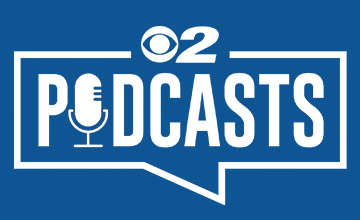Podcast: Play in new window | Download (Duration: 20:10 — 17.8MB) | Embed
Subscribe: Apple Podcasts | Android | RSS
It’s exciting when your baby gets a first tooth! But it’s a long and somewhat painful process before your baby has enough teeth to start really chewing food. But with that discomfort in your baby’s gums, you may wonder when it’s time to start brushing those new teeth.
Jade Elliott spoke with Dr. Hans Reinemer, a pediatric dentist with Intermountain Primary Children’s Hospital and spokesperson for the American Academy of Pediatric Dentistry to help answer all things about your baby’s teeth and their care.
When should you start brushing your child’s teeth?
Begin cleaning or brushing an infant’s teeth as soon as the teeth begin to erupt. Use an infant brush or moistened clean soft gauze to brush or wipe the teeth after feedings. One parent can hold the baby in a comfortable position, while the other parent brushes the child’s teeth.
For toddlers, let them chew on a brush during bath time. Keep your eye on your child at all times in the bathtub. This is safer than letting them walk around with a toothbrush. This gets them used to the look and feel of a brush and the chewing motion can massage the gums and erupting teeth. Parents should follow up and brush their child’s teeth to make sure every area is clean.
Tell, Show and Then Do
As children get older and understand basic instruction, use “Tell-Show-Do” when guiding the behavior of children. Pediatric dentists use this in the dental office. Parents can use the same techniques at home when it comes to teaching children to brush. Tell small children what you are going to do, show them how to do it on a stuffed animal or doll, then perform on the child.
Talk to your child about their teeth and why they need to brush them to prevent cavities and tooth decay. For older children, explain how you need to brush away the bacteria, because the bacteria produces acid. The acid in turn can eat away the enamel on teeth. For younger children, a parent can explain that there are tiny “bugs” on the teeth that make them dirty.
Take Turns
Encourage the child to try brushing first, then the parent should always get a turn. Parents should look for areas the child may be missing and help at as needed.
Give Your Child a Choice
Let your child pick out their own age appropriate toothbrush. If they like it, they will use it more. Some toothbrushes make noise, light up, play music or come in fun styles like superheroes or princesses.
Ideas to Make Brushing Fun
1. Play a game. Find ways to make it fun and reward the small child with surprises for a good efforts and consistency.
2. Put on some tunes. Teach them to brush for the length of one song.
How Long to Brush
For a toddler, the length of the ABC song may be good.
As children get older, monitor the time. Splashing a little water on the teeth for five seconds is not enough! Don’t be afraid to send them back to the sink for the appropriate length of time – two minutes.
The bottom line is, never assume any child of any age is going to do a thorough job at brushing teeth. Teach, observe, time and follow up twice daily.
How Much Toothpaste to Use?
A schmear (grain of rice) of fluoridated toothpaste is appropriate until the child can predictably rinse and spit, then progress to a pea-sized amount.
When Can Children Brush Their Teeth on Their Own?
Children may have the manual dexterity to brush on their own when they can tie their own shoes. The child may not need help anymore, but watch to monitor thoroughness.
For more information about pediatric dentistry visit:
https://intermountainhealthcare.org/
https://mouthmonsters.mychildrensteeth.org/ (The parent resource of the American Academy of Pediatric Dentistry)
The Baby Your Baby program provides many resources for all pregnant women and new moms in Utah. There is also expert advice from the Utah Department of Health and Intermountain Healthcare that air each week on KUTV 2News.
